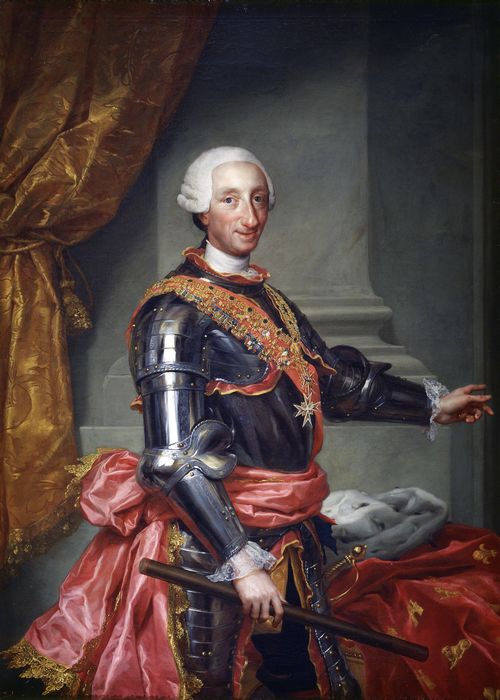Charles III

Carlos III by Anton Raphael Mengs (Copyright © Museo Nacional del Prado)
Carlos III (20 January 1716 – 14 December 1788) was King of Spain in the years 1759 to 1788.
Carlos was the fifth son of Philip V of Spain and the eldest son of Philip's second wife, Elisabeth Farnese. In 1734, at the age of 18, he led Spanish troops in a bold and almost entirely bloodless march down Italy to seize the Kingdom of Naples and Kingdom of Sicily and enforce the Spanish claim to their thrones. In 1738 he married the Princess Maria Amalia of Saxony, daughter of Augustus III of Poland. The couple resided in Naples for 19 years, and Carlos gained valuable experience in his 25-year rule in Italy, so that he was well prepared as monarch of the Spanish Empire.
Carlos succeeded to the Spanish throne in 1759 upon the death of his childless half-brother Ferdinand VI. As king of Spain, Carlos III made far-reaching reforms to increase the flow of funds to the crown and defend against foreign incursions on the empire. He facilitated trade and commerce, modernized agriculture and land tenure, and promoted science and university research. Although he did not achieve complete control over Spain's finances, and was sometimes obliged to borrow to meet expenses, most of his reforms proved successful in providing increased revenue to the crown and expanding state power, leaving a lasting legacy.
In the Spanish Empire his regime enacted a series of sweeping reforms with the aim of bringing the overseas territories under firmer control by the central government, reversing the trend toward local autonomy, and gaining more control over the Church.
On 19 September 1759 a royal decree authorised changing coinage designs from the Pillar style to the Bust or Portrait style, with the bust of the king on the obverse and the royal coat of arms on the reverse, and with the Pillars of Hercules added to the coat of arms. For some reason the coins with the newly authorised designs were not struck until 8 April 1772. By secret order on 18 March 1771 the fineness of the silver coins was lowered from 0.9167 to 0.9027.
